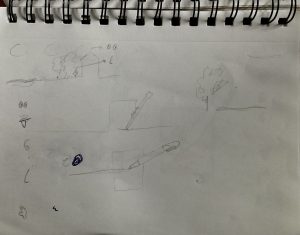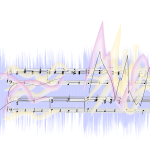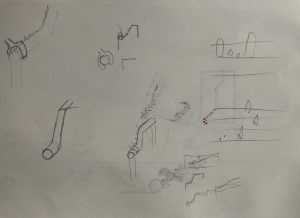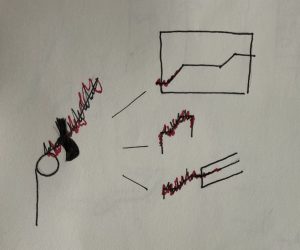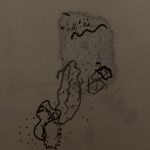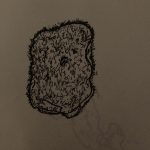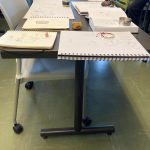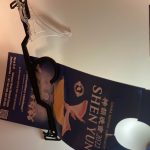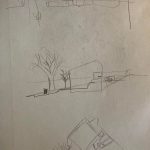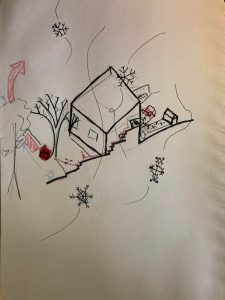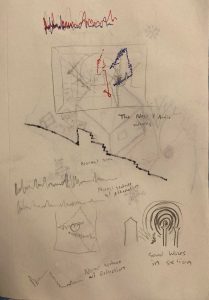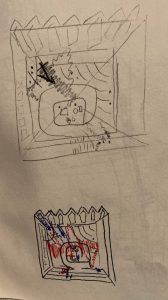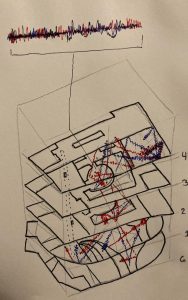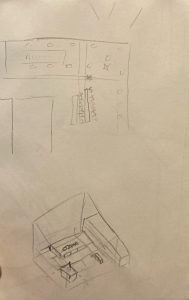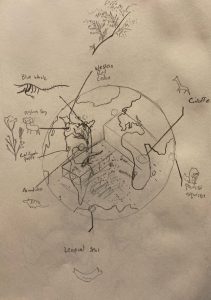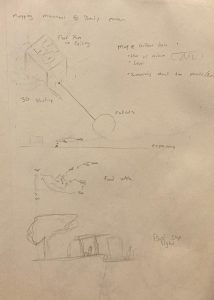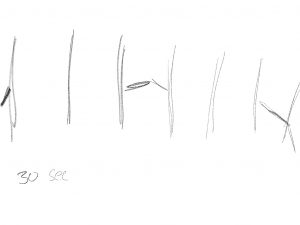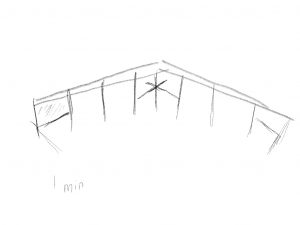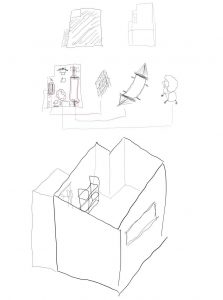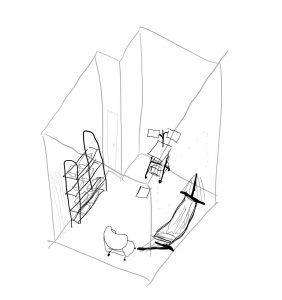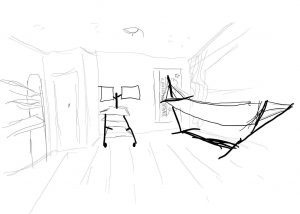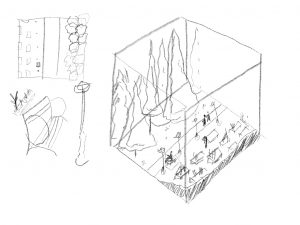I started the exploration with an analysis of edge conditions and trip hazards, explored the transition of heat drawn away from my body by sitting on the cold cement, and tried to represent texture along the edge of a planting area.

Next I sat in the plaza and tried to imagine the world only from what I could hear. Annotating direction, rhythm, and amplitude of sound surrounding me.
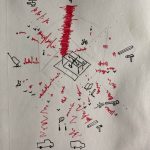
I walked across the plaza looking for something to draw, and I noticed that through my thin shoes I could feel the difference in textures as I walked around. This map attempts to denote the rythm and feeling of my foot as I traveled across the plaza using only line. each segment of dotted line represents an individual step (although it is not to scale), with the expression of the line meant to indicate how the step felt: soft, sharp, etc.

Im calling the top drawing a texture map – the line attempts to communicate the soft and rough textures along the hands path of this moss covered tree limb.|

The bottom Drawing is about the sensorial experience of each step in the process of making a vegan take on a deep south bbq sandwich and bananna pudding desert.
*update*
(ive tried re-uploading these images but it is still cropping them weirdly)
